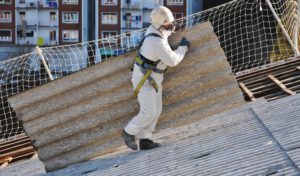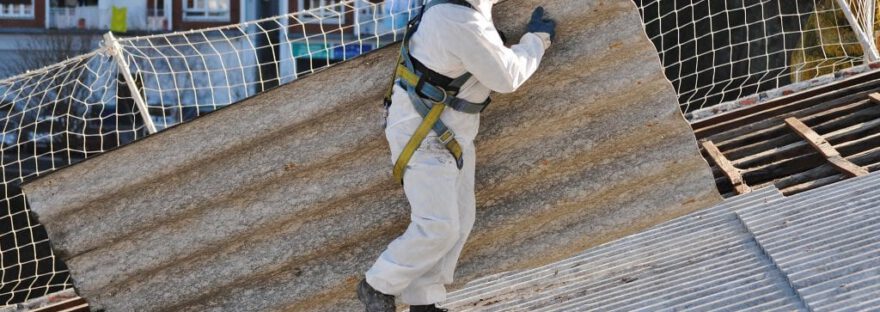Asbestos Removal WA can be found everywhere, including popcorn ceilings, shingles, and insulation. Its fibers are dangerous and can cause lung cancer, mesothelioma, and asbestosis.
The type of asbestos and the area contaminated will affect removal costs. It is usually cheaper to encapsulate the material instead of removing it.
Asbestos is a dangerous material that has been linked to numerous diseases, including mesothelioma and lung cancer. It can be found in various materials, including insulation, roofing, and siding. When these materials are disturbed, they release tiny fibers into the air, which can be inhaled by humans and pets and lead to life-threatening illnesses. The best way to prevent asbestos-related diseases is to have your home or business inspected by a professional.

The cost of asbestos removal will vary depending on the type of work required and the location of the asbestos-containing materials. For example, it costs more to remove asbestos from hard-to-access areas such as the roof or attic than it does inaccessible locations. The size of the area also affects cost. For example, a 1,500-square-foot home will cost more to inspect and remove asbestos than a smaller house.
Labor costs are the largest part of the total asbestos remediation cost. A crew of two people working eight hours will cost about $1,200. In addition, other charges are associated with the work, such as the pre-cleaning and set-up process. These costs can range from $240 to $350 per hour, according to Angi.
Other factors determining the cost of asbestos removal include permit fees, disposal fees, overall equipment prices, and local regulations. For example, some states consider certain types of non-friable asbestos as less hazardous during disposal, which makes it cheaper to dispose of.
In addition to the actual cost of asbestos removal, other expenses can add up quickly. For example, a contractor may need to turn off your HVAC system during the cleanup process to prevent fibers from escaping into other parts of your house or building. In addition, your contractor will need to build a decontamination enclosure and post signs. Finally, waste containers must be labeled and transported to approved hazmat dump sites.
While asbestos removal is expensive, it’s important to remember that exposure can be deadly. The tiny fibers can be inhaled into the lungs and are known to cause cancer. If you have asbestos in your home, it’s crucial to have it inspected and removed by a professional.
Asbestos removal is a complex process that requires specialized training and equipment. It is regulated by federal, state, and sometimes local governments. There are also specific safety measures that must be followed when conducting asbestos abatement work, including wearing respirators and sealing the area. In addition, it is important to have a contractor with a valid asbestos permit from the Department of Health. A valid permit is important to ensure that workers are protected from dangerous asbestos fibers and other potential contaminants.
To reduce the risk of asbestos exposure, contractors should protect the entire working area with heavy plastic sheeting and tape. The area should be covered with a layer of at least 6mil thick and removed at the end of each workday. In addition, the contractor should wet the surface of the work area with a hand sprayer that creates a fine mist. Wet fibers are less likely to be released into the air and can be easily cleaned up. Additionally, the contractor should not break up the materials they remove, such as pipe insulation. This could release the asbestos fibers into the air. Finally, the contractor should seal the work area and turn off the heating and air conditioning system.
The NESHAP regulations require that the owner of the structure or facility notify the appropriate agency before beginning demolition or renovation activities that might contain asbestos. These activities include construction, renovation, repair, and maintenance of facilities or structures with a quantity of asbestos above a certain threshold. The NESHAP regulations also specify work practices that must be used during demolition and renovation to minimize the release of asbestos into the air.
While homeowners can remove DIY asbestos, a permit must be obtained from the relevant government agency. Several states and cities have different rules on this issue, so it is best to check with the local government before starting demolition or construction work. Sometimes, a homeowner may need a permit from the state environmental protection department and the city building department.
Asbestos is a group of six naturally occurring minerals blended to create heat-resistant fibers. They are also very strong and insulating. These characteristics made them popular in home construction materials, including floor tiles and roofing shingles. Unfortunately, these materials can pose a health hazard if damaged and release asbestos fibers into the air. This may lead to respiratory conditions such as mesothelioma and asbestosis. This is why it is important to hire professionals who are licensed and certified to remove asbestos.
A certified asbestos abatement professional will follow strict safety protocols during the removal process. These include using protective gear and sealed work areas. They will turn off the regular heating, ventilation, and air conditioning system during the process, and they will use plastic sheeting to prevent dust from spreading into other parts of your home. They will also wear respirators and a Tyvk whole-body suit to protect themselves from dangerous asbestos particles.
They will wet the asbestos material to reduce the risk of spreading airborne fibers and make removing them easier. They will then place it in containers labeled as hazardous waste. They will then schedule a time for a special truck to pick it up and transport it to a regulated dumping site.
It is recommended that homeowners not perform major repairs on their homes without first consulting a licensed asbestos removal specialist. In addition, it is important to have a professional assess the condition of the asbestos-containing materials. This will ensure that the material is not in good condition and is not deteriorating, which could increase the risk of asbestos fibers being released.
It is best to leave materials that contain asbestos in good condition, but it is not always possible. Some homes with a lot of old asbestos-containing materials require renovation and repair to the roof, garage structures, insulation, and other parts of the house. However, homeowners should check the status of the asbestos-containing materials and have them professionally removed if they are in bad shape. This will help prevent asbestos fibers from being released into the air and inhaled by family members.
Asbestos is a fibrous mineral that is toxic to humans when inhaled. It is found in many products, including floor tiles, roofing materials, shingles, and siding. It was once a popular building material because of its strength and heat resistance, but it has been linked to several health problems. While the production and sale of asbestos have been banned in many countries, some buildings may still have the substance. To protect your health and the environment, it’s best to have any suspicious materials tested by a licensed professional.
Asbestos abatement involves removing and cleaning up any asbestos materials from a house or commercial property. It also includes preparing and sealing the work area to prevent contamination from spreading to other building parts. It can be expensive, but it’s worth it for your long-term health.
The type of materials and size of the job can affect the cost of asbestos removal. Smaller jobs, such as removing insulation from a single room, are cheaper than larger jobs. The most expensive jobs include attic and roof removal, as well as siding replacement. The amount of asbestos to be removed will also influence the price, as will the project’s location.
Typically, the cost of asbestos removal is higher in urban areas than in rural ones. This is due to higher equipment prices and disposal fees in urban areas. Local regulations also affect the cost of asbestos removal, as do permit requirements and disposal fees.
There are no state or federal laws that prohibit homeowners from removing asbestos themselves, but they should be aware of the risks and hire a professional to do so. They should also be careful not to disturb asbestos, especially if they plan to renovate shortly.
When working with asbestos, contractors should wear protective clothing and use a HEPA vacuum to remove the fibers. They should also apply a wetting agent to the material before they begin to break it up and remove it. This will reduce the number of fibers that float into the air and make them easier to capture. The contractor should also keep the work area sealed from other rooms and shut off the HVAC system during the procedure.

